Resources
About Us
Food Traceability Market by Technology (Barcode, Infrared, GPS, RFID, Biometrics), Software Type (ERP, Laboratory Information Systems, Friction Welding), and Application (Meat, Poultry and Seafood; Fresh Food, Dairy, Beverages) - Global Forecast to 2032
Report ID: MRICT - 1041071 Pages: 190 Jan-2025 Formats*: PDF Category: Information and Communications Technology Delivery: 24 to 72 Hours Download Free Sample ReportThe Food Traceability Market is projected to reach $40.05 billion by 2032, at a CAGR of 9.3% during the forecast period 2025–2032. The growth of this market is driven by the rising prevalence of foodborne diseases and food adulteration incidents worldwide, technological advancements and increasing digitization in the food industry, stringent food safety & traceability regulations and standards established by government bodies and international organizations, and increasing product recalls due to food contamination. However, the lack of infrastructure for supporting food traceability in emerging countries and various data privacy issues related to food traceability restrain the growth of this market. Moreover, the rise in food transparency is expected to generate significant growth opportunities for the stakeholders in the food traceability market. However, the lack of standardization and harmonization in food traceability systems is a major challenge impacting market growth.
The report offers a competitive analysis based on an extensive assessment of the leading players’ product portfolios, geographic presence, and key growth strategies adopted in the last 3–4 years. Some of the key players operating in the food traceability market are Bio-Rad Laboratories, Inc. (U.S.), C.H. Robinson Worldwide, Inc. (U.S.), Cognex Corporation (U.S.), Damselfly Solutions Inc. (U.S.), Food Forensics Limited (U.K.), FoodLogiQ, LLC (U.S.), Honeywell International Inc. (U.S.), MASS Group, Inc. (U.S.), Merit-Trax Technologies (Canada), OPTEL GROUP (Canada), SGS SA (Switzerland), VISIOTT Technologie GmbH (Germany), and Zebra Technologies Corporation (U.S.).
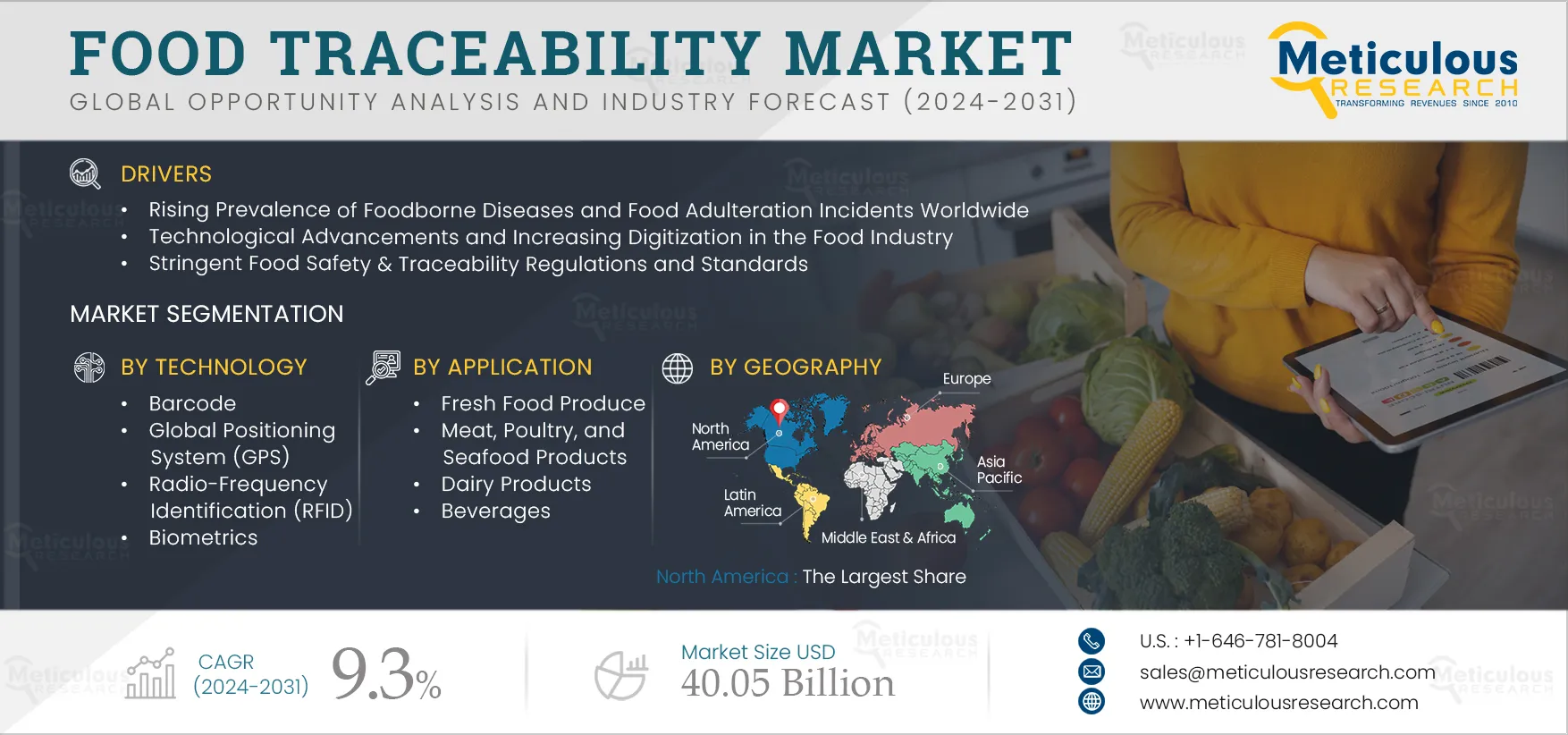
Click here to: Get Free Sample Pages of this Report
The rising prevalence of foodborne diseases and food adulteration incidents are major public health risks. Foodborne diseases are usually infectious and are caused by microorganisms and pathogens that enter the body through contaminated food. Consuming safe foods is one of the main factors to be considered for a healthy life. According to the World Health Organization (WHO), in 2024, one in ten people suffered from foodborne diseases globally due to the consumption of contaminated food products. Also, in 2024, 40% of children under the age of five years suffered from foodborne diseases globally. Additionally, over 200 diseases are caused by the consumption of foods contaminated with bacteria, viruses, parasites, and chemical substances such as heavy metals.
The rising prevalence of foodborne diseases has highlighted the need for comprehensive and effective food traceability systems that can track the origin and journey of food products from farm to fork. According to the World Bank’s 2019 report—The Economic Burden of Foodborne Diseases, the total productivity loss due to foodborne diseases in low- and middle-income countries was approximately $95.2 billion, and the annual cost of treating foodborne illnesses was $15 billion. Food safety is a shared responsibility involving the whole supply chain, from producers to consumers. Most foodborne diseases are preventable with proper food handling and education at all levels. Hence, food safety has become a major concern, driving the demand for food traceability systems.
Furthermore, increasing food trade and globalization are expected to boost the demand for food traceability systems that help identify the origin, location, and ownership of food products as they move through the supply chain. These systems allow for the tracking and tracing of contaminated foods. They help prevent food safety incidents, improve the efficiency of food recalls, and increase consumer confidence. Food traceability systems can also provide valuable data to food companies and regulators, allowing them to improve food safety standards and prevent future incidents.
Therefore, growth in the global food supply chain and the increasing demand for safe and high-quality food products are expected to drive the growth of the food traceability market.
The Barcode Segment Expected to Dominate the Food Traceability Market in 2025
Based on technology, the food traceability market is segmented into barcode, infrared, Global Positioning System (GPS), Radio-Frequency Identification (RFID), biometrics, and other technologies. In 2025, the barcode segment is expected to account for the largest share of the food traceability market. The segment’s large market share is mainly attributed to the easy and cost-effective implementation of barcode solutions compared to other traceability technologies, the high accuracy and speed of barcode technology in tracking food products, and the high accessibility of barcode technology for a wide range of businesses including retail and manufacturing.
However, the Radio-Frequency Identification (RFID) segment is projected to register the highest CAGR during the forecast period. The growth of this segment is driven by the real-time data tracking (including temperature and location data) capabilities and the comprehensive view of the supply chain offered by RFID technology, which can help improve food safety and quality.
The Enterprise Resource Planning (ERP) Segment Expected to Dominate the Food Traceability Market in 2025
Based on software, the food traceability market is segmented into Enterprise Resource Planning (ERP), warehouse software, laboratory information systems, friction welding, and other software types. In 2025, the Enterprise Resource Planning (ERP) segment is expected to account for the largest share of the food traceability market. The segment’s large share is attributed to the higher adoption of ERP software due to the real-time data and analytics offered, which can help food companies make better business decisions. ERP software provides end-to-end integration across various business functions, including sourcing modules, inventory management, product development & production planning, quality control, compliance, and distribution. These features enable food companies to better manage supply chains, improve customer service, and ensure compliance.
The Fresh Food Produce Segment Expected to Dominate the Food Traceability Market in 2025
Based on application, the food traceability market is segmented into fresh food produce, meat, poultry, & seafood products, dairy products, beverages, and other applications. In 2025, the fresh food produce segment is expected to account for the largest share of the food traceability market. The segment’s large share is mainly attributed to the wide use of food traceability systems in the fresh food produce category due to the perishable nature of products and consumers’ increasing preference for fresh produce due to population growth and rising awareness regarding the negative impacts of meat consumption.
North America Expected to Dominate the Food Traceability Market in 2025
Based on geography, the food traceability market is segmented into North America, Europe, Asia-Pacific, Latin America, and the Middle East & Africa. In 2025, North America is expected to account for the largest share of the food traceability market. The large share of this regional market is mainly attributed to increasing food safety concerns, strict government regulations for food safety, increasing digitization and technological advancements in the food industry, and the well-established food industry in the region. Furthermore, the rise in food transparency and consumers’ increasing preference for healthy foods are expected to support the growth of this regional market.
However, Asia-Pacific is projected to record the highest CAGR during the forecast period due to the high population growth and rising prevalence of foodborne diseases in the region, stringent food safety & traceability regulations, rapid urbanization, changing consumer preferences, and the region’s growing importance in the global food supply chain. The increasing demand for sustainable food and beverage products is also expected to boost the adoption of food traceability systems and solutions in this region.
|
Particulars |
Details |
|
Number of Pages |
~190 |
|
Format |
|
|
Forecast Period |
2025–2032 |
|
Base Year |
2024 |
|
CAGR |
9.3% |
|
Estimated Market Size |
$40.05 Billion by 2032 |
|
Segments Covered |
By Technology
By Software Type
By Application
|
|
Countries Covered |
North America (U.S., Canada), Europe (Germany, France, U.K., Italy, Spain, and Rest of Europe), Asia-Pacific (China, India, Japan, Australia, and Rest of Asia-Pacific), Latin America (Brazil, Mexico, and Rest of Latin America), and the Middle East & Africa |
|
Key Companies |
Bio-Rad Laboratories, Inc. (U.S.), C.H. Robinson Worldwide, Inc. (U.S.), Cognex Corporation (U.S.), Damselfly Solutions Inc. (U.S.), Food Forensics Limited (U.K.), FoodLogiQ, LLC (U.S.), Honeywell International Inc. (U.S.), MASS Group, Inc. (U.S.), Merit-Trax Technologies (Canada), OPTEL GROUP (Canada), SGS SA (Switzerland), VISIOTT Technologie GmbH (Germany), and Zebra Technologies Corporation (U.S.) |
Key Questions Answered in the Report:
Food traceability refers to the tracing and tracking of food products throughout the supply chain, from raw material sourcing to end consumers. Food traceability solutions track information on the sources of ingredients, processing and packaging facilities, transportation and distribution networks, retailers, and consumers who purchase the products. Food traceability systems aim to improve food safety, ensure product quality, and increase transparency in the food supply chain. They help build consumers’ trust in the food products they purchase and increase accountability and responsibility among food industry stakeholders.
This report provides market sizes & forecasts based on technology, software type, application, and geography.
The Food Traceability Market is projected to reach $40.05 billion by 2032, at a CAGR of 9.3% during the forecast period 2025–2032.
Based on technology, the Radio-Frequency Identification (RFID) segment is projected to record the highest growth rate during the forecast period 2025–2032.
o Rising prevalence of foodborne diseases and food adulteration incidents worldwide
o Technological advances and increasing digitization in the food industry
o Stringent food safety & traceability regulations and standards established by government bodies and international organizations
o Increasing product recalls due to food contamination
o Lack of infrastructure to support food traceability in emerging countries
o Data privacy issues related to food traceability
The key players operating in the food traceability market are Bio-Rad Laboratories, Inc. (U.S.), C.H. Robinson Worldwide, Inc. (U.S.), Cognex Corporation (U.S.), Damselfly Solutions Inc. (U.S.), Food Forensics Limited (U.K.), FoodLogiQ, LLC (U.S.), Honeywell International Inc. (U.S.), MASS Group, Inc. (U.S.), Merit-Trax Technologies (Canada), OPTEL GROUP (Canada), SGS SA (Switzerland), VISIOTT Technologie GmbH (Germany), and Zebra Technologies Corporation (U.S.).
Asia-Pacific is projected to record the highest CAGR during the forecast period due to the high population growth and rising prevalence of foodborne diseases in the region, stringent food safety & traceability regulations, rapid urbanization, changing consumer preferences, and the region’s increasing importance in the global food supply chain. The increasing demand for sustainable food and beverage products is also expected to boost the demand for food traceability solutions in the region.
1. Introduction
1.1. Market Definition & Scope
1.2. Market Ecosystem
1.3. Currency
1.4. Key Stakeholders
2. Research Methodology
2.1. Research Approach
2.2. Data Collection & Validation Process
2.2.1. Secondary Research
2.2.2. Primary Research/Interviews with Key Opinion Leaders from the Industry
2.3. Market Sizing and Forecasting
2.3.1. Market Size Estimation Approach
2.3.2. Growth Forecast Approach
2.4. Assumptions for the Study
3. Executive Summary
3.1. Overview
3.2. Segmental Analysis
3.2.1. Global Food Traceability Market Analysis: by Technology
3.2.2. Global Food Traceability Market Analysis: by Software Type
3.2.3. Global Food Traceability Market Analysis: by Application
3.3. Food Traceability Market, by Region
3.4. Competitive Landscape & Market Competitors
4. Market Insights
4.1. Overview
4.2. Factors Affecting Market Growth
4.2.1. Drivers
4.2.1.1. Rising Prevalence of Foodborne Diseases and Food Adulteration Incidents Worldwide
4.2.1.2. Technological Advancements and Increasing Digitization in the Food Industry
4.2.1.3. Stringent Food Safety & Traceability Regulations and Standards
4.2.1.4. Increasing Product Recalls Due to Food Contamination
4.2.2. Restraints
4.2.2.1. Lack of Supporting Infrastructure in Emerging Countries
4.2.2.2. Data Privacy Issues Related to Food Traceability Systems
4.2.3. Opportunities
4.2.3.1. Increase in Food Transparency
4.2.4. Challenges
4.2.4.1. Lack of Standardization and Harmonization in Food Traceability Systems
4.3. Porter’s Five Forces Analysis
4.3.1. Bargaining Power of Suppliers
4.3.2. Bargaining Power of Buyers
4.3.3. Threat of Substitutes
4.3.4. Threat of New Entrants
4.3.5. Degree of Competition
5. Food Traceability Market Assessment—by Technology
5.1. Overview
5.2. Barcode
5.3. Radio-Frequency Identification (RFID)
5.4. Global Positioning System (GPS)
5.5. Biometrics
5.6. Infrared
5.7. Other Technologies
6. Food Traceability Market Assessment—by Software Type
6.1. Overview
6.2. Enterprise Resource Planning (ERP)
6.3. Warehouse Software
6.4. Laboratory Information Systems
6.5. Friction Welding
6.6. Other Software Types
7. Food Traceability Market Assessment—by Application
7.1. Overview
7.2. Fresh Food Produce
7.3. Meat, Poultry, and Seafood Products
7.4. Dairy Products
7.5. Beverages
7.6 Other Applications
8. Food Traceability Market Assessment—by Geography
8.1. Overview
8.2. North America
8.2.1. U.S.
8.2.2. Canada
8.3. Europe
8.3.1. Germany
8.3.2. France
8.3.3. U.K.
8.3.4. Italy
8.3.5. Spain
8.3.6. Rest of Europe
8.4. Asia-Pacific
8.4.1. China
8.4.2. India
8.4.3. Japan
8.4.4. Australia
8.4.5. Rest of Asia-Pacific
8.5. Latin America
8.5.1. Brazil
8.5.2. Mexico
8.5.3. Rest of Latin America
8.6. Middle East & Africa
9. Competition Analysis
9.1. Overview
9.2. Key Growth Strategies
9.3. Competitive Benchmarking
9.4. Competitive Dashboard
9.4.1. Industry Leaders
9.4.2. Market Differentiators
9.4.3. Vanguards
9.4.4. Emerging Companies
10. Company Profiles (Company Overview, Financial Overview, Product Portfolio, and Strategic Developments)
10.1. Bio-Rad Laboratories, Inc.
10.2. C.H. Robinson Worldwide, Inc.
10.3. Cognex Corporation
10.4. Damselfly Solutions Inc.
10.5. Food Forensics Limited
10.6. FoodLogiQ, LLC
10.7. Honeywell International Inc.
10.8. MASS Group, Inc.
10.9. Merit-Trax Technologies
10.10. OPTEL GROUP
10.11. SGS SA
10.12. VISIOTT Technologie GmbH
10.13. Zebra Technologies Corporation
(Note: SWOT analyses of the top 5 companies will be provided)
11. Appendix
11.1. Available Customization
11.2. Related Reports
List of Tables
Table 1 Global Food Traceability Market, by Technology, 2022–2032 (USD Million)
Table 2 Global Food Traceability Market for Barcode Technology, by Country/Region, 2022–2032 (USD Million)
Table 3 Global Food Traceability Market for RFID Technology, by Country/Region, 2022–2032 (USD Million)
Table 4 Global Food Traceability Market for GPS Technology, by Country/Region, 2022–2032 (USD Million)
Table 5 Global Food Traceability Market for Biometrics Technology, by Country/Region, 2022–2032 (USD Million)
Table 6 Global Food Traceability Market for Infrared Technology, by Country/Region, 2022–2032 (USD Million)
Table 7 Global Food Traceability Market for Other Technologies, by Country/Region, 2022–2032 (USD Million)
Table 8 Global Food Traceability Market, by Software Type, 2022–2032 (USD Million)
Table 9 Global Food Traceability Market for ERP Software, by Country/Region, 2022–2032 (USD Million)
Table 10 Global Food Traceability Market for Warehouse Software, by Country/Region, 2022–2032 (USD Million)
Table 11 Global Food Traceability Market for Laboratory Information Systems, by Country/Region, 2022–2032 (USD Million)
Table 12 Global Food Traceability Market for Friction Welding Software, by Country/Region, 2022–2032 (USD Million)
Table 13 Global Food Traceability Market for Other Software Types, by Country/Region, 2022–2032 (USD Million)
Table 14 Global Food Traceability Market, by Application, 2022–2032 (USD Million)
Table 15 Global Food Traceability Market for Fresh Food Produce, by Country/Region, 2022–2032 (USD Million)
Table 16 Global Food Traceability Market for Meat, Poultry, and Seafood Products, by Country/Region, 2022–2032 (USD Million)
Table 17 Global Food Traceability Market for Dairy Products, by Country/Region, 2022–2032 (USD Million)
Table 18 Global Food Traceability Market for Beverages, by Country/Region, 2022–2032 (USD Million)
Table 19 Global Food Traceability Market for Other Applications, by Country/Region, 2022–2032 (USD Million)
Table 20 Global Food Traceability Market, by Country/Region, 2022–2032 (USD Million)
Table 21 North America: Food Traceability Market, by Country, 2022–2032 (USD Million)
Table 22 North America: Food Traceability Market, by Technology, 2022–2032 (USD Million)
Table 23 North America: Food Traceability Market, by Software Type, 2022–2032 (USD Million)
Table 24 North America: Food Traceability Market, by Application, 2022–2032 (USD Million)
Table 25 U.S.: Food Traceability Market, by Technology, 2022–2032 (USD Million)
Table 26 U.S.: Food Traceability Market, by Software Type, 2022–2032 (USD Million)
Table 27 U.S.: Food Traceability Market, by Application, 2022–2032 (USD Million)
Table 28 Canada: Food Traceability Market, by Technology, 2022–2032 (USD Million)
Table 29 Canada: Food Traceability Market, by Software Type, 2022–2032 (USD Million)
Table 30 Canada: Food Traceability Market, by Application, 2022–2032 (USD Million)
Table 31 Europe: Food Traceability Market, by Country/Region, 2022–2032 (USD Million)
Table 32 Europe: Food Traceability Market, by Technology, 2022–2032 (USD Million)
Table 33 Europe: Food Traceability Market, by Software Type, 2022–2032 (USD Million)
Table 34 Europe: Food Traceability Market, by Application, 2022–2032 (USD Million)
Table 35 Germany: Food Traceability Market, by Technology, 2022–2032 (USD Million)
Table 36 Germany: Food Traceability Market, by Software Type, 2022–2032 (USD Million)
Table 37 Germany: Food Traceability Market, by Application, 2022–2032 (USD Million)
Table 38 France: Food Traceability Market, by Technology, 2022–2032 (USD Million)
Table 39 France: Food Traceability Market, by Software Type, 2022–2032 (USD Million)
Table 40 France: Food Traceability Market, by Application, 2022–2032 (USD Million)
Table 41 U.K.: Food Traceability Market, by Technology, 2022–2032 (USD Million)
Table 42 U.K.: Food Traceability Market, by Software Type, 2022–2032 (USD Million)
Table 43 U.K.: Food Traceability Market, by Application, 2022–2032 (USD Million)
Table 44 Italy: Food Traceability Market, by Technology, 2022–2032 (USD Million)
Table 45 Italy: Food Traceability Market, by Software Type, 2022–2032 (USD Million)
Table 46 Italy: Food Traceability Market, by Application, 2022–2032 (USD Million)
Table 47 Spain: Food Traceability Market, by Technology, 2022–2032 (USD Million)
Table 48 Spain: Food Traceability Market, by Software Type, 2022–2032 (USD Million)
Table 49 Spain: Food Traceability Market, by Application, 2022–2032 (USD Million)
Table 50 Rest of Europe: Food Traceability Market, by Technology, 2022–2032 (USD Million)
Table 51 Rest of Europe: Food Traceability Market, by Software Type, 2022–2032 (USD Million)
Table 52 Rest of Europe: Food Traceability Market, by Application, 2022–2032 (USD Million)
Table 53 Asia-Pacific: Food Traceability Market, by Country/Region, 2022–2032 (USD Million)
Table 54 Asia-Pacific: Food Traceability Market, by Technology, 2022–2032 (USD Million)
Table 55 Asia-Pacific: Food Traceability Market, by Software Type, 2022–2032 (USD Million)
Table 56 Asia-Pacific: Food Traceability Market, by Application, 2022–2032 (USD Million)
Table 57 China: Food Traceability Market, by Technology, 2022–2032 (USD Million)
Table 58 China: Food Traceability Market, by Software Type, 2022–2032 (USD Million)
Table 59 China: Food Traceability Market, by Application, 2022–2032 (USD Million)
Table 60 India: Food Traceability Market, by Technology, 2022–2032 (USD Million)
Table 61 India: Food Traceability Market, by Software Type, 2022–2032 (USD Million)
Table 62 India: Food Traceability Market, by Application, 2022–2032 (USD Million)
Table 63 Japan: Food Traceability Market, by Technology, 2022–2032 (USD Million)
Table 64 Japan: Food Traceability Market, by Software Type, 2022–2032 (USD Million)
Table 65 Japan: Food Traceability Market, by Application, 2022–2032 (USD Million)
Table 66 Australia: Food Traceability Market, by Technology, 2022–2032 (USD Million)
Table 67 Australia: Food Traceability Market, by Software Type, 2022–2032 (USD Million)
Table 68 Australia: Food Traceability Market, by Application, 2022–2032 (USD Million)
Table 69 Rest of Asia-Pacific: Food Traceability Market, by Technology, 2022–2032 (USD Million)
Table 70 Rest of Asia-Pacific: Food Traceability Market, by Software Type, 2022–2032 (USD Million)
Table 71 Rest of Asia-Pacific: Food Traceability Market, by Application, 2022–2032 (USD Million)
Table 72 Latin America: Food Traceability Market, by Country/Region, 2022–2032 (USD Million)
Table 73 Latin America: Food Traceability Market, by Technology, 2022–2032 (USD Million)
Table 74 Latin America: Food Traceability Market, by Software Type, 2022–2032 (USD Million)
Table 75 Latin America: Food Traceability Market, by Application, 2022–2032 (USD Million)
Table 76 Brazil: Food Traceability Market, by Technology, 2022–2032 (USD Million)
Table 77 Brazil: Food Traceability Market, by Software Type, 2022–2032 (USD Million)
Table 78 Brazil: Food Traceability Market, by Application, 2022–2032 (USD Million)
Table 79 Mexico: Food Traceability Market, by Technology, 2022–2032 (USD Million)
Table 80 Mexico: Food Traceability Market, by Software Type, 2022–2032 (USD Million)
Table 81 Mexico: Food Traceability Market, by Application, 2022–2032 (USD Million)
Table 82 Rest of Latin America: Food Traceability Market, by Technology, 2022–2032 (USD Million)
Table 83 Rest of Latin America: Food Traceability Market, by Software Type, 2022–2032 (USD Million)
Table 84 Rest of Latin America: Food Traceability Market, by Application, 2022–2032 (USD Million)
Table 85 Middle East & Africa: Food Traceability Market, by Technology, 2022–2032 (USD Million)
Table 86 Middle East & Africa: Food Traceability Market, by Software Type, 2022–2032 (USD Million)
Table 87 Middle East & Africa: Food Traceability Market, by Application, 2022–2032 (USD Million)
Table 88 Recent Developments, by Company (2021–2025)
List of Figures
Figure 1 Research Process
Figure 2 Secondary Sources Referenced for the Study
Figure 3 Primary Research Techniques
Figure 4 Key Executives Interviewed
Figure 5 Breakdown of Primary Interviews (Supply-side & Demand-side)
Figure 6 Market Sizing and Growth Forecast Approach
Figure 7 The Barcode Segment to Dominate the Food Traceability Market in 2025
Figure 8 The Enterprise Resource Planning (ERP) Segment to Dominate the Food Traceability Market in 2025
Figure 9 The Fresh Food Produce Segment to Dominate the Food Traceability Market in 2025
Figure 10 North America to Dominate the Global Food Traceability Market in 2025
Figure 11 Impact Analysis of Market Dynamics
Figure 12 Porter’s Five Forces Analysis: Global Food Traceability Market
Figure 13 Global Food Traceability Market, by Technology, 2025 Vs. 2032 (USD Million)
Figure 14 Global Food Traceability Market, by Software Type, 2025 Vs. 2032 (USD Million)
Figure 15 Global Food Traceability Market, by Application, 2025 Vs. 2032 (USD Million)
Figure 16 Global Food Traceability Market, by Country/Region, 2025 Vs. 2032 (USD Million)
Figure 17 North America: Food Traceability Market Snapshot (2025)
Figure 18 Europe: Food Traceability Market Snapshot (2025)
Figure 19 Asia-Pacific: Food Traceability Market Snapshot (2025)
Figure 20 Latin America: Food Traceability Market Snapshot (2025)
Figure 21 Middle East & Africa: Food Traceability Market Snapshot (2025)
Figure 22 Key Growth Strategies Adopted by Leading Players, 2021-2025
Figure 23 Competitive Dashboard: Food Traceability Market
Figure 24 Honeywell International Inc.: Financial Overview (2022)
Figure 25 SGS SA: Financial Overview (2022)
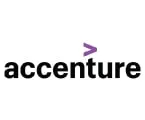
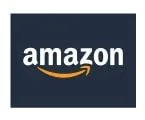
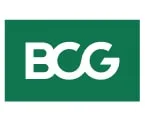
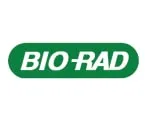
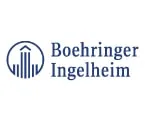
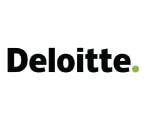
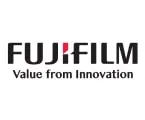
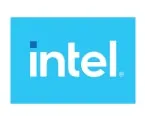
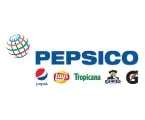
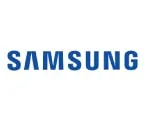
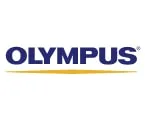

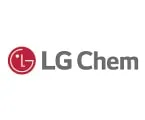
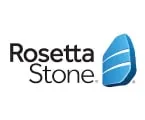
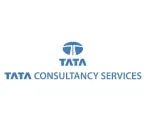
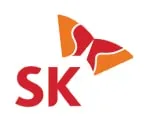
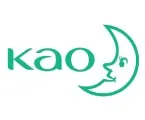
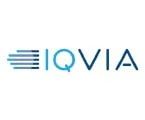
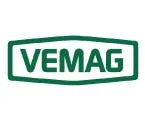
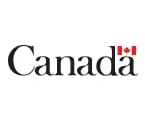
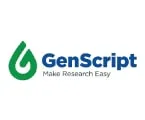
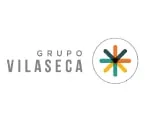


Please enter your corporate email id here to view sample report.
Subscribe to get the latest industry updates